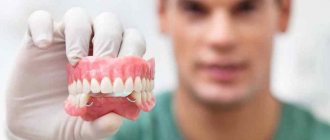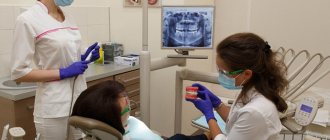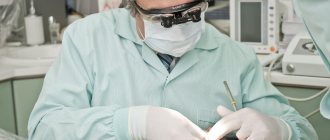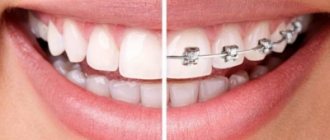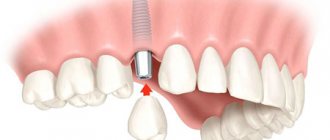Orthopedics is a clinical and surgical medical branch whose area of interest includes the study of dysfunctions/deformations of muscle tissue and skeletal systems that have developed against the background of congenital anomalies, mechanical damage, pathologies of embryonic formation or infectious lesions. The development and subsequent implementation of preventive, diagnostic and therapeutic methods for problems of the musculoskeletal system is also included in this section. Orthopedics is associated with traumatology, whose area of interest includes the study of mechanical disorders of the musculoskeletal system. Orthopedics and traumatology are developing integrally from prosthetics - a technical and medical discipline developing in the direction of the development, creation, and operation of orthoses and prostheses that help restore the normal functions of the musculoskeletal structure of the human body. What does an orthopedist treat?
First, you need to understand the question: “An orthopedist is what kind of doctor?”
Who is an orthopedist
An orthopedist is a doctor who studies and solves problems of the musculoskeletal system, which includes muscle tissue, joints, bones, tendons, and nerve structures. What is another name for an orthopedic doctor? Another name for this specialty is orthopedist-traumatologist (in some sources simply “traumatologist”). What is this connected with?
In order to obtain the specialty of an orthopedist, a young specialist must initially undergo basic training at a higher medical institution in the specialty of general medicine, or in the field of pediatrics, and only after graduation he has the right to choose an additional specialization. In this case we are talking about the department of “orthopedics and traumatology”. Consequently, upon completion of additional education, the doctor will have the specialty of “orthopedist-traumatologist”.
Depending on the focus of the medical institution, place of work (as a rule, the place is provided and little depends on the choice of the young specialist), the doctor can conduct professional activities primarily in one of the areas (orthopedics or traumatology), or, depending on work experience, degree competencies and orientation of honey. institutions, conduct medical activities as an orthopedist-traumatologist.
Cost of services of an orthopedic traumatologist at the Stoparthrosis clinic
| Services | Price | Sign up |
| Consultation with an orthopedist | 2000 rub | Sign up |
| Shock wave therapy Promotion until January 15! | 150 rubles 1 minute 300 rubles 1 min | Sign up |
| Ultrasound-guided hip block | 4000 rubles 5000 rubles | Sign up |
| Heel spur block | 3000 rubles 5000 rubles | Sign up |
| Paravertebral spinal block | 3000 rub | Sign up |
| Blockade for lumbar hernia | 3000 rub | Sign up |
| Knee joint puncture | 3000 rub | Sign up |
| Prp therapy (plasma therapy) Promotion until January 15! | 4000r 6000r | Sign up |
| Removing plastic plaster | 1500 | Sign up |
What does an orthopedist do and what does he do?
What does an orthopedist do? As we indicated above, orthopedics is a broad section of medicine, so there are various areas:
- Surgical orthopedics is a field that deals with radical treatment (through surgery) of disorders of the functioning and structure of the musculoskeletal system;
- Pediatric orthopedics deals with diagnostics, therapeutic and preventive activities regarding musculoskeletal disorders in children of different ages, including adolescence;
- Endoprosthetics of bones and joints - replacement of components of the bone structure with implants that have anatomical identity, allowing the restoration of impaired functions;
- Outpatient orthopedics (conservative) deals with the non-operative treatment of diseases of the musculoskeletal structure;
- Traumatology and orthopedics (this also includes sports orthopedics) invasive and non-invasive treatment of musculoskeletal injuries, including specific sports injuries;
An orthopedic doctor (also known as a traumatologist) can carry out professional activities in clinics or hospitals, conducting outpatient visits and prescribing conservative treatment, or carry out medical activities in specialized medical institutions (for example, a trauma hospital).
What does an orthopedist do during an appointment? The orthopedist’s appointment follows the standard procedure:
- Initially, the orthopedic doctor conducts a conversation to identify complaints and collect anamnesis in general;
- The next step is a visual examination, with the help of which the doctor assesses the anatomical structure of the bone structure. This type of diagnosis is extremely important in pediatric orthopedics, when examining babies under one year old, as well as newborns. When conducting a visual examination, the doctor assesses deviations in the movements of the damaged/affected joints;
For a complete diagnosis, the orthopedic doctor prescribes hardware diagnostic methods. The results of which diagnostic methods may be required by the doctor:
- CT scan;
- Magnetic resonance imaging;
- Ultrasound examination of tendons and joints;
- Radiography allows you to assess the condition and anatomical structure of the skeletal system;
Identification of infectious and inflammatory processes, which may cause damage to the musculoskeletal system, is carried out through laboratory tests:
- Blood test for a time index of coagulation (prothombin time/index);
- UAC and OAM;
If necessary, an orthopedic surgeon can provide assistance through redressation, which consists of closed surgery (for example, for dislocations).
Our service will select the best orthopedist for you for free when you call our Unified Appointment Center by phone. We will find an experienced doctor near you, and the price will be lower than if you contact the clinic directly.
Diagnostic methods and therapy
At the first consultation, the orthopedist listens to the patient’s complaints, conducts a visual examination, determines the range of motion and prescribes the necessary examination. Most often, this is an x-ray, on the basis of which the diagnosis is confirmed or refuted. In some cases, a magnetic resonance or computed tomography scan will be required to get a clearer and better picture. In addition to diagnostic tests, the orthopedist issues a referral for a general urine and blood test.
Based on the results obtained, a therapeutic course is developed. It is selected individually for each patient. Some will need surgery, others will need a course of antibiotics or massage, and others will need lifestyle adjustments. The main thing is not to self-medicate, but strictly follow the doctor’s recommendations.
More fresh and relevant information about health on our Telegram channel. Subscribe: https://t.me/foodandhealthru
We will be grateful if you use the buttons:
What does an orthopedist treat?
The competence of an orthopedic doctor includes the treatment of various diseases. Below we provide a short list of diseases that an orthopedist treats.
What does an orthopedist treat in adults:
- Bursitis/arthrosis – diseases in which inflammation of the joints and periarticular bursa is observed;
- Rheumatoid arthritis is a severe, chronic disease that affects the skeletal system, which can lead to joint deformation;
- Sprain;
- Joint dislocations;
- Intervertebral hernia is a disease manifested in tissue rupture and subsequent disc displacement;
- Styloiditis, as well as any other inflammatory diseases of the tendons;
- Osteochondrosis is a disease characterized by damage to the spine and its parts;
- Joint dysplasia (hip) is a congenital abnormality of the joint, leading to an atypical position of the femoral head;
- Clubfoot;
- Deforming ostosis is a disease of the bone skeleton, characterized by bone restructuring, which subsequently leads to severe deformities;
- Heel spur (abnormal deformity);
- Flat feet and any other curvatures of the feet;
- Benign tumors of the skeletal system. For example, chondroma, fibroma, osteoid osteoma, etc. Malignant tumors are initially diagnosed by an orthopedist, but the treatment of cancer is carried out by an orthopedic oncologist (orthopedic oncologist);
- Scoliosis is a curvature of the spine;
- False joints;
- Deformities of any limbs;
- Slow healing of fractures and much more;
Please note that the above list includes diseases treated by an orthopedist-traumatologist. If there are two specialists in one medical institution (orthopedist and traumatologist), you will be sent to one or the other, since they share medical responsibilities among themselves. If there is one, you will be sent to him with any problem.
What does an orthopedist treat in children:
- Congenital dislocation of the hip joint (bone);
- Congenital deviation of the hand from the forearm;
- Syndactyly (fusion of fingers, complete/partial);
- Pathologies of the spine in a child;
- Neck deformities (torticollis, Grisel's disease and others);
- Congenital pathological alignment of the scapula;
- Polydactyly (extra fingers/phalanxes);
- Flat feet;
- Clubfoot;
- Congenital dislocation of the kneecap;
What you need to know about pediatric orthopedics
Pediatric orthopedists are placed in a separate category. The direction itself is focused on the prevention and treatment of skeletal defects. Consultation with an orthopedist is necessary not only for schoolchildren, but also for preschool children. The doctor will diagnose the baby’s musculoskeletal system, identify its strengths/weaknesses, determine the child’s readiness for future stress (school/university) and tell parents how to avoid many ailments.
An emergency visit to a specialist is indicated in the following cases:
- incorrect position of the newborn's hip (congenital dislocation);
- heaviness of gait, rapid fatigue of the baby after several steps or minutes of walking;
- slouch;
- constant tilt of the head to the shoulder;
- the child’s own complaints of episodic pain in the legs/back/neck/arms;
- clubfoot.
Monitor your own child and analyze the pace of his development. Failure to see a doctor in a timely manner is fraught with complications, long-term therapy and a decrease in the baby’s quality of life.
When should you see an orthopedist?
Often, adults who have serious problems with the musculoskeletal system turn to an orthopedist because they initially did not pay attention to the symptomatic manifestations of developing diseases. This is not surprising, since diseases of the skeletal and muscular system initially have mild symptoms, and only an experienced doctor can diagnose the problem at an early stage.
Timely stopping of degenerative processes is possible with an adequate attitude to the “signals” that the body “gives” in the presence of any problems. If you experience any of the symptoms listed below, a visit to your podiatrist is highly recommended.
- Relatively quick fatigue of the lower extremities with light loads;
- Pain in the joints;
- The appearance of a constant/periodic crunch when bending the limbs in the joints;
- Deformation of the chest bones;
- Inability to stay in an upright position (standing) for a long time;
- Asymmetrical shoulders;
- Deformation of the limbs (appearance of neoplasms in the form of growths/bumps, curvature of the fingers);
- Inflammatory processes in the area of damaged joints, manifested in redness and swelling of local areas of skin tissue;
- Stooping, especially progressive;
- Rachiocampsis;
- Lameness;
If you have/have suffered from the diseases noted in the list below, you must visit an orthopedist regularly.
- Spinal injuries;
- Osteochondrosis;
- Rheumatoid arthritis;
- Dislocation of the shoulder/knee joint;
- Arthrosis;
- Fractures of the femur, its neck;
Protracted diseases of the skeletal and muscular system are much more difficult to treat than diseases detected at an early stage of development. That is why it is important to contact an orthopedist in a timely manner.
Research methods in traumatology and orthopedics
Diagnostics is the first and most important stage in the process of restoring human health. The feasibility and effectiveness of all subsequent actions largely depends on its reliability and accuracy: prescribing drug therapy, physiotherapeutic or surgical treatment.
Medical science does not stand still. Every year, methods for diagnosing diseases become more and more high-tech, new techniques appear, diagnostic equipment becomes more complex, thereby becoming more accurate and of higher quality. But at the same time, becoming more expensive.
Therefore, “ancient”, but proven over decades, diagnostic methods remain the main and most frequently used in our work.
Probably one of the most famous methods for studying the osteoarticular apparatus is radiography . Most likely, there is no adult who has never encountered the need for this fairly simple and cheap, but at the same time very important research. By the way, X-ray examination has been used in medicine for more than 100 years. Nowadays, modern X-ray machines are safer and produce less radiation than they were a few years ago. The main task of the x-ray method is to study bone tissue. However, indirect signs of soft tissue damage can also be determined using this method.
For a more accurate examination of soft tissues and internal organs, an equally well-known and widespread method, such as ultrasound , is used. When does a modern individual first encounter this method? Even before birth, in the womb! Ultrasound is no less valuable for a doctor than x-rays. Ultrasound has gained major popularity due to its complete safety and ease of use. For a more in-depth study of musculoskeletal problems, methods such as magnetic resonance imaging and computed tomography . These methods are more difficult to use due to the need for rather bulky equipment and specially prepared premises. Therefore, as a rule, these research methods are limited, are not always used and are located in highly specialized institutions.
What types of treatment are prescribed by an orthopedist?
Treatment of any orthopedic diseases is often carried out comprehensively and may include:
- Physiological procedures;
- Drug treatment (taking medications, applying medicinal balms and ointments);
- Use of orthopedic orthoses (insoles, corsets, etc.);
- Mechanical treatment using specific therapeutic massages;
- Hardware treatment;
- Surgical intervention;
- Alternative treatments (aromatherapy, acupuncture, etc.);
